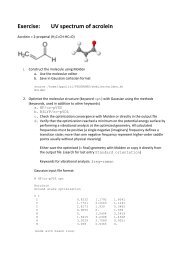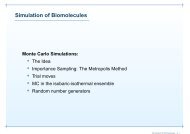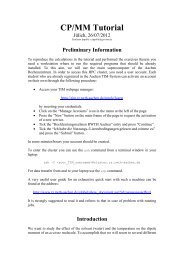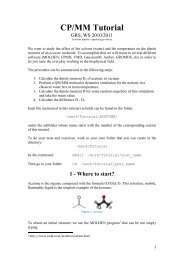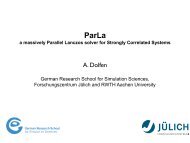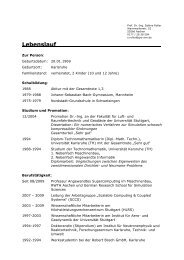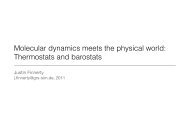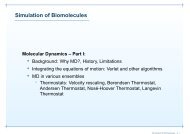Slides
Slides
Slides
Create successful ePaper yourself
Turn your PDF publications into a flip-book with our unique Google optimized e-Paper software.
Acetone in Water: Electrostatic Interactions<br />
• Amber10 MD package <br />
– not directly usable for ordinary organic molecules <br />
– accurate representa4on of electrosta4c interac4ons is crucial <br />
for a force field <br />
– no par4al charges, which have to be derived from quantum <br />
chemical methods. <br />
– Atomic charges <br />
• par44oning the wave func4on in terms of the basis func4ons <br />
• fi~ng schemes <br />
• par44oning the electron density into atomic domains <br />
– Procedure here: <br />
• calculate the electrosta4c poten4al on a grid around the molecule <br />
• least squares fi~ng algorithm is used to derive a set of atom-‐centered point <br />
charges which best reproduce the molecular electrosta4c poten4al (MEP). <br />
• Charges for a new molecule: RESP = Restrained ElectroSta4c Poten4al fit <br />
• Quantum chemistry program: Gaussian09



